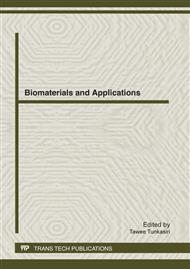p.529
p.533
p.537
p.541
p.545
p.548
p.552
p.556
p.560
Antimicrobial Activity of Newly Formulated Propolis Cream
Abstract:
The aim of this study was to determine the antimicrobial activities present in newly formulated propolis cream and compare them with an organic solvent extract of propolis. The antimicrobial activities were examined using the agar well diffusion method and measuring the growth inhibition zone. The skin pathogen gram-positive organisms used were Micrococcus luteus, Staphylococcus epidermidis, Streptococcus pyogenes, Methicillin resistant Staphylococcus aureus (MRSA), and Staphylococcus aureus. The propolis cream and extracts showed satisfactory inhibitory effects on the microbial growth.
Info:
Periodical:
Pages:
545-547
Citation:
Online since:
April 2012
Keywords:
Price:
Сopyright:
© 2012 Trans Tech Publications Ltd. All Rights Reserved
Share:
Citation:


